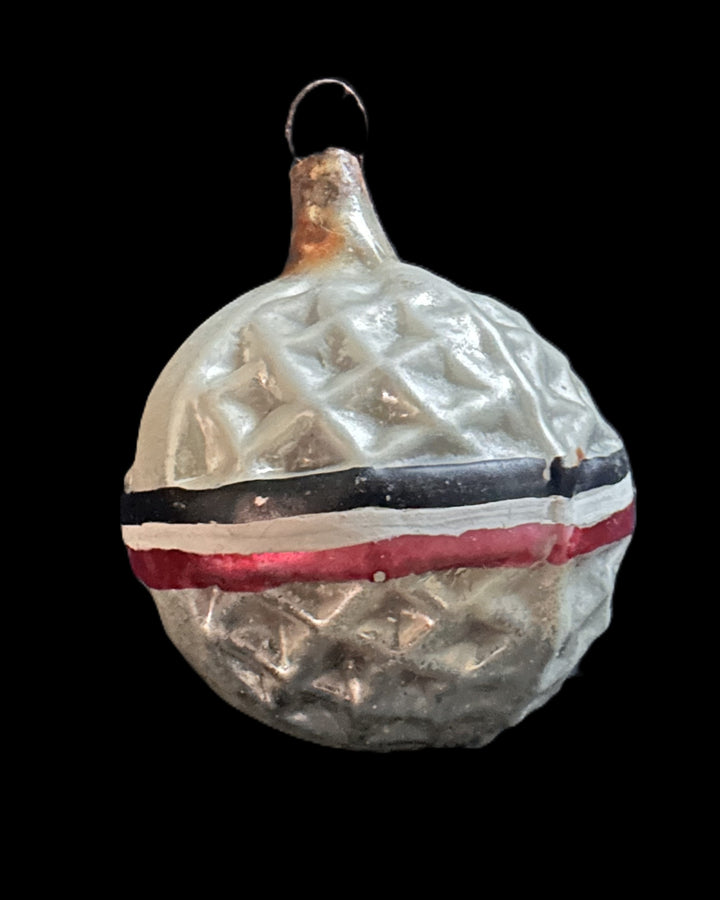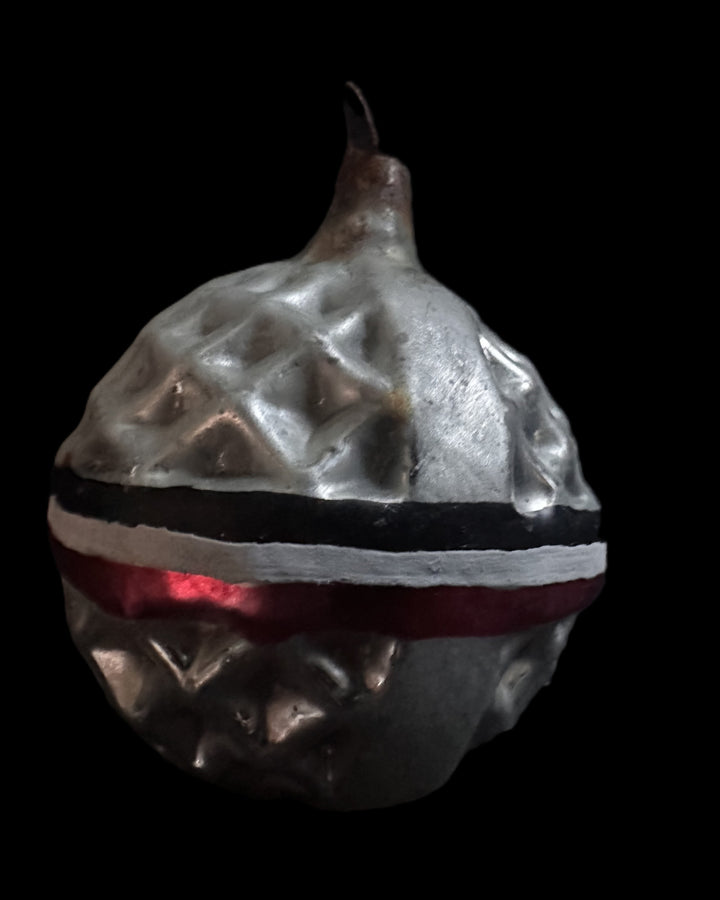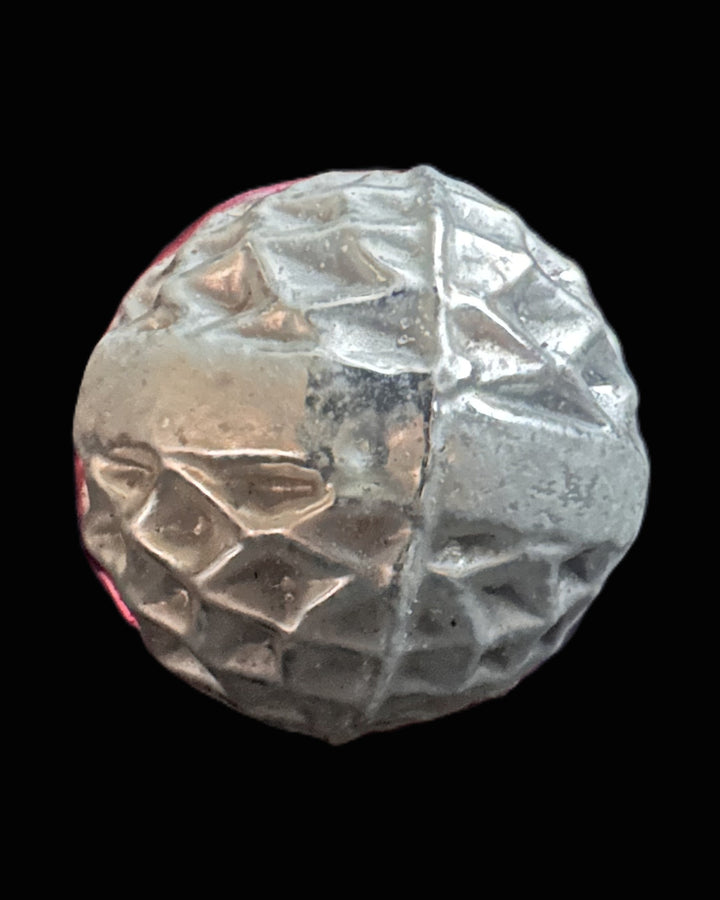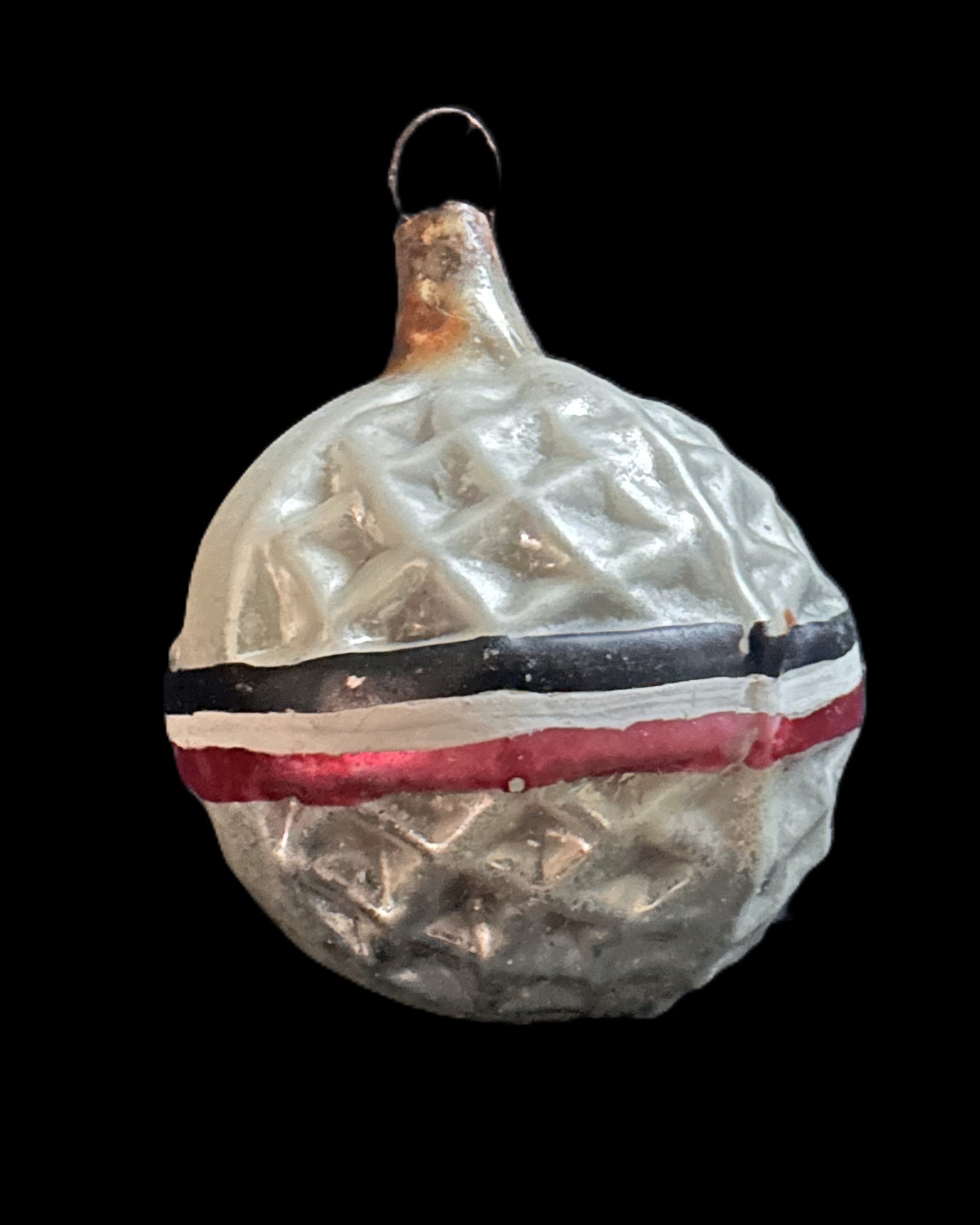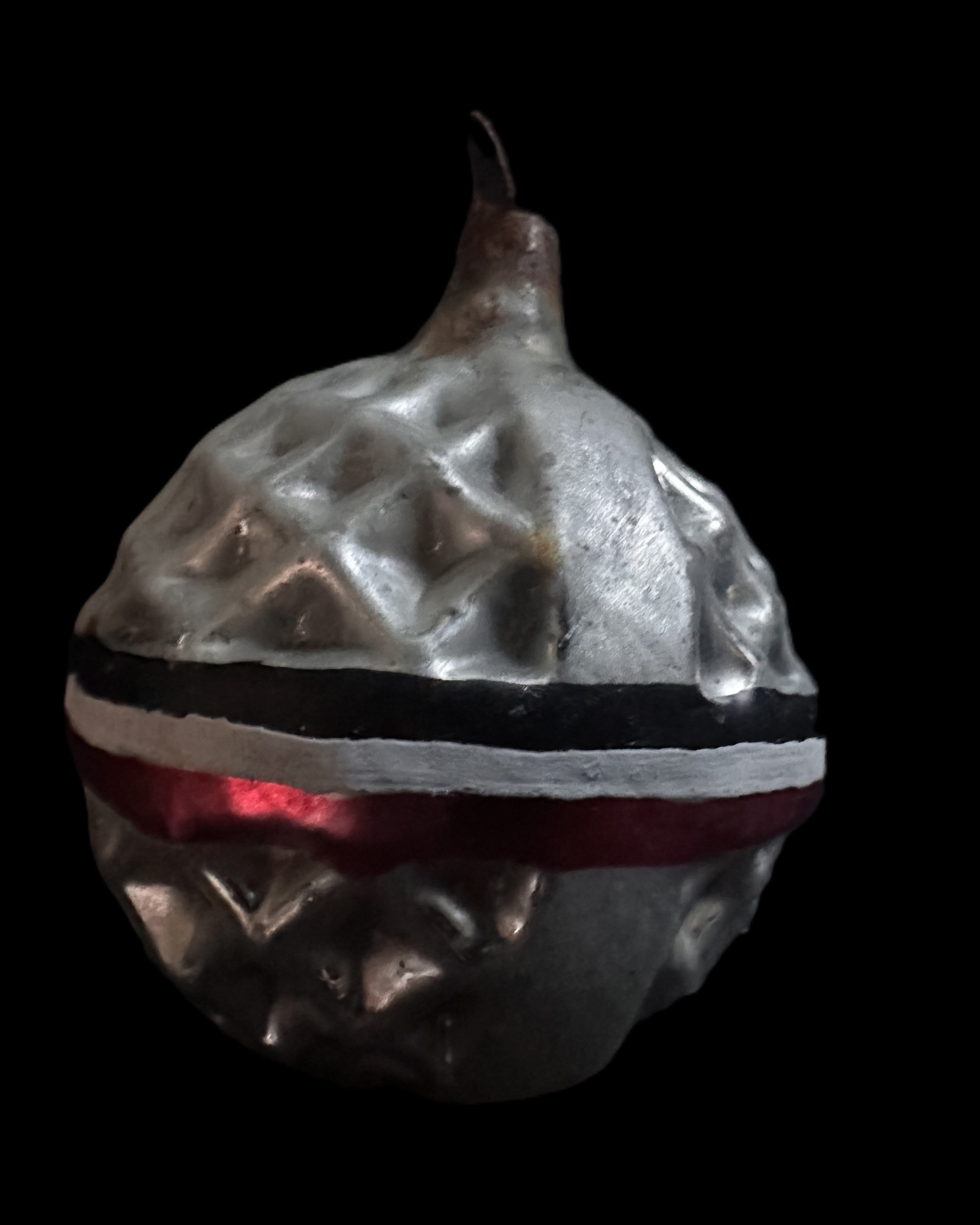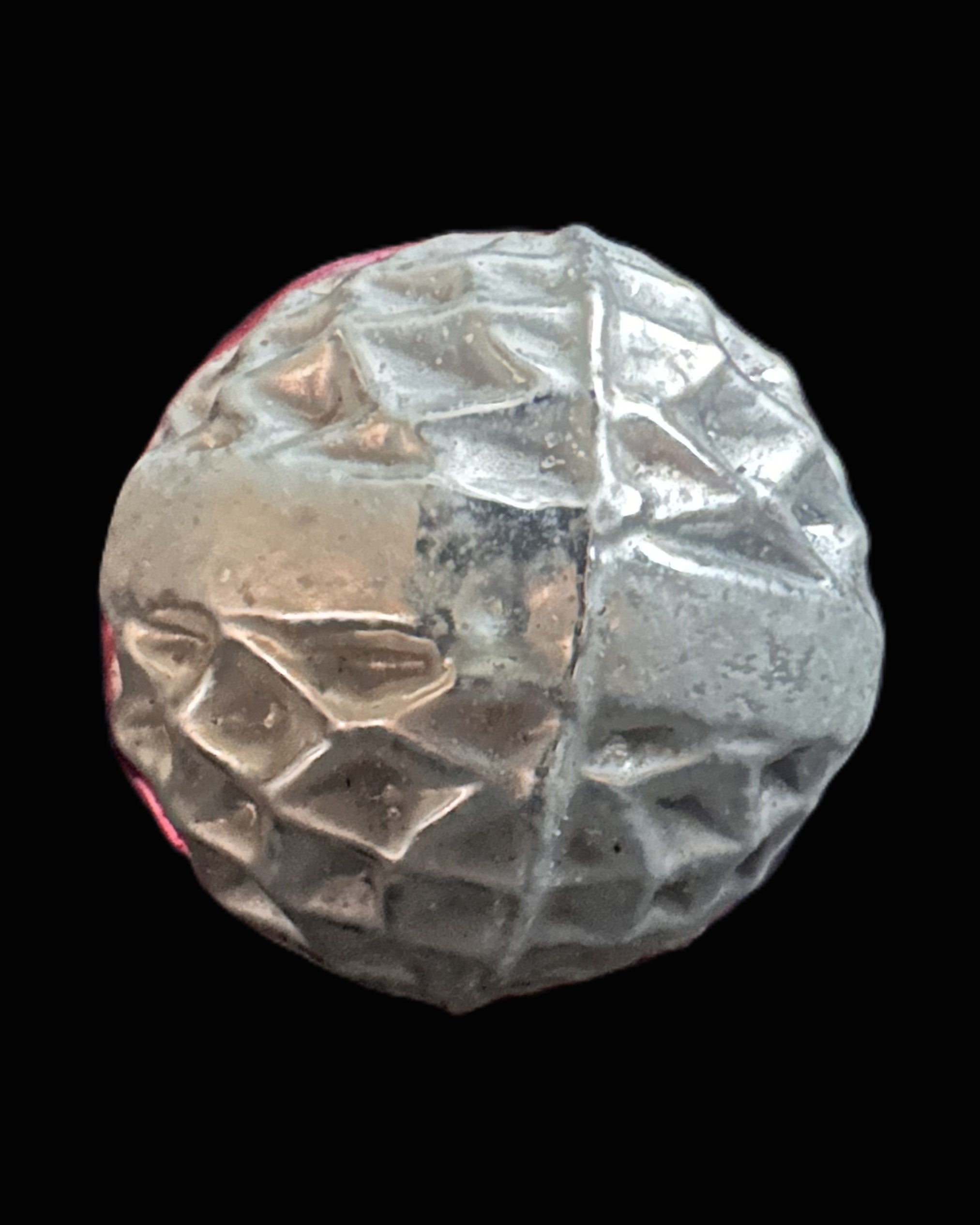Imperial German Patriotic Glass Christmas Ornament with National Colors
- Regular price
- $187.00
- Sale price
- $187.00
- Regular price
SKU: 18-84
This exceptionally scarce WWI-era German Christmas ornament is a hand-blown and hand-painted glass sphere, measuring approximately 2 inches in diameter. Its surface is textured in a quilted diamond pattern, with a boldly painted central band in the black–white–red tricolor of the German Empire. The ornament retains its original wire suspension loop and displays the delicate workmanship typical of early 20th-century Lauscha glass artisans.
Condition: The ornament shows light oxidation around the suspension cap and expected age wear to the painted tricolor band. The glass remains intact with no structural damage. Despite its fragility, the colors are still strong and vivid, making it an excellent survivor of its type.
Historical Context – Kriegsweihnachten (Wartime Christmas):
During the First World War, German families celebrated Christmas under the strain of separation, rationing, and loss. Yet Christmas remained one of the most important holidays, blending deep religious tradition with patriotic expression. The famous “Weihnacht im Felde” (Christmas at the Front) became a symbol of endurance, while on the home front, families decorated trees with ornaments that reflected their loyalty to Kaiser and Fatherland.
Glassmakers in Thuringia, especially in the Lauscha region, responded by producing ornaments in national colors, often alongside military-themed decorations such as miniature Iron Crosses, pickelhauben, or even zeppelins. These ornaments allowed families to bring a symbolic reminder of loved ones at the front into their holiday traditions.
The black–white–red tricolor carried deep meaning, representing the unity of Prussia (black and white) with the Hanseatic states (red and white) under the 1871 Empire. By displaying these colors on their Christmas trees, families expressed both patriotism and solidarity with soldiers enduring a “Kriegsweihnacht” far from home.
Collectibility: Surviving examples of these fragile patriotic ornaments are extremely rare, as most were broken over the decades or lost in the upheaval of postwar years. This piece appeals not only to militaria collectors but also to antique holiday collectors, bridging two distinct areas of collecting. It represents both material culture and the emotional life of the German home front during the Great War.
